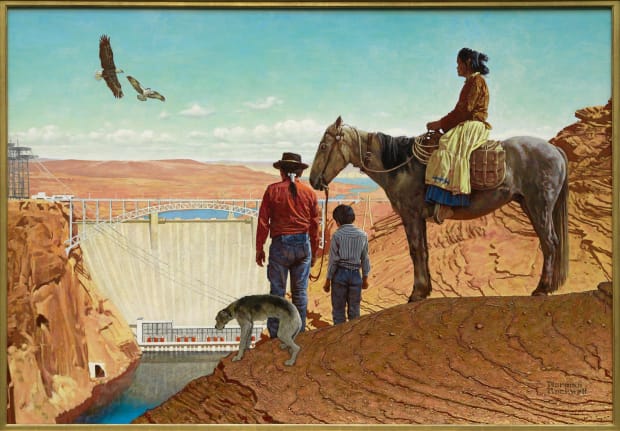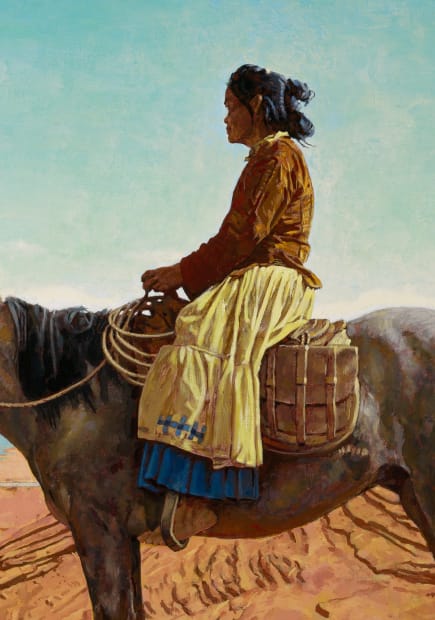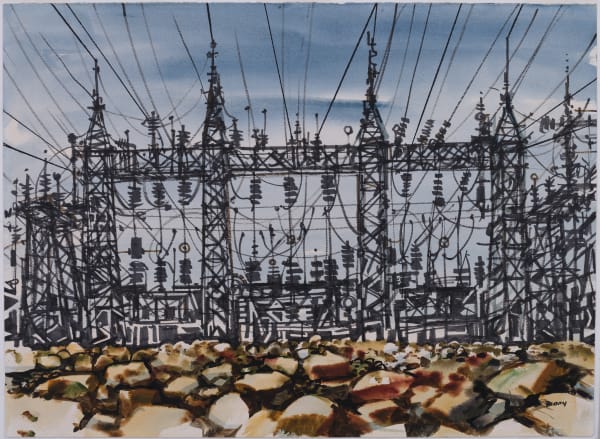-
Fine Art Collection
of the Bureau of ReclamationIn the late 1960s, the Bureau of Reclamation embarked on a program to present its accomplishments to the public through the medium of art. Under the direction of John DeWitt of the Commissioner's Office in Washington D.C., and Dr. Lloyd Goodrich, advisory director of the Whitney Museum of Modern Art in New York City, forty prominent United States artists were commissioned to visit Reclamation's water resource development sites throughout the western United States and record their impressions through various medias. The artists were given a free hand to depict a subject of their choosing, as long as their artworks pertained to a Reclamation program - the development of the West's water resources for irrigation, hydropower generation, recreation, water conservation, and fish and wildlife enhancement. The artists employed their choice of media and artistic techniques, resulting in a spectacular variety artworks ranging from the abstract depiction of irrigated fields along the lower Colorado River as seen by Richard Diebenkorn, to Norman Rockwell's portrait of a Native American family overlooking Glen Canyon Dam, to Anton Refregier's scenes of construction activities at Grand Coulee Dam.
When the project was completed, more than 375 pieces of art had been created. In the early 1970s, many of the pieces were displayed to the public in a traveling exhibit circulated by the Smithsonian Institution entitled "The American Artist and Water Reclamation." Although many of the pieces were returned to the artists, Reclamation maintains a collection of over 200 artworks.
In 2021-2022, the artwork was scanned and digitized for an online art exhibition, to ensure future generations would have the opportunity to view the collection, a representation of the American West in the 20th Century, as well as an intersection of engineering and art to showcase the transformative history of Reclamation in the West.
-
Special Feature & Recent Digitization
Norman Rockwell's Glen Canyon Dam -
View Reclamation Art by Region
-
-

Columbia-Pacific Northwest Region
This collection of works from eight commissioned artists are representative -

The Colorado and its Tributaries
Artwork Inspired by the Colorado River -

Lower Colorado Basin Region
-

California-Great Basin Region
-

Upper Colorado Basin Region
The following artworks were created and/or inspired by the scenes of the Upper Colorado Basin Region. This region encompasses all or parts of Arizona, Colorado, Idaho, Nevada, New Mexico, Texas,... -

Missouri Basin and Arkansas-Rio Grande-Texas Gulf Regions
-














